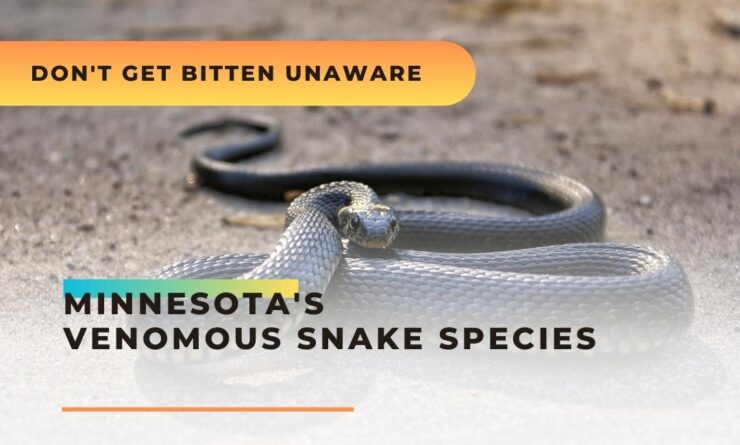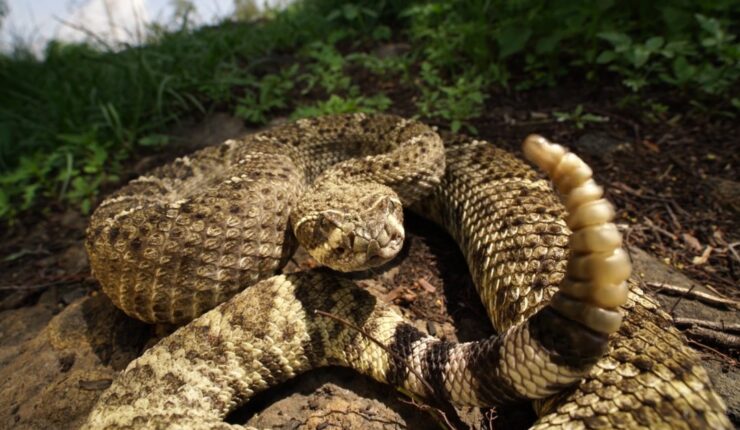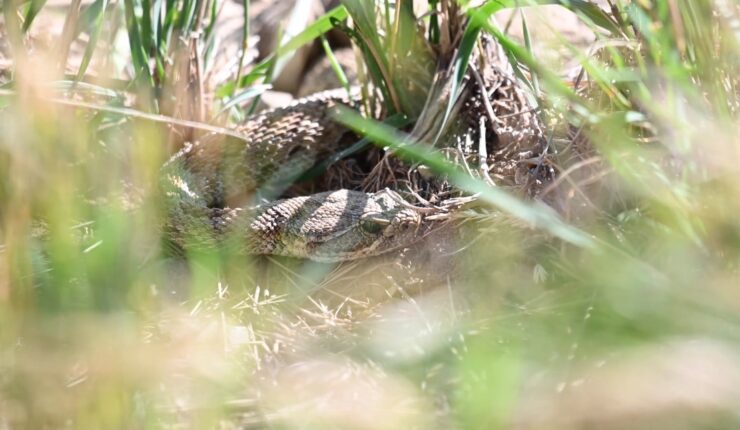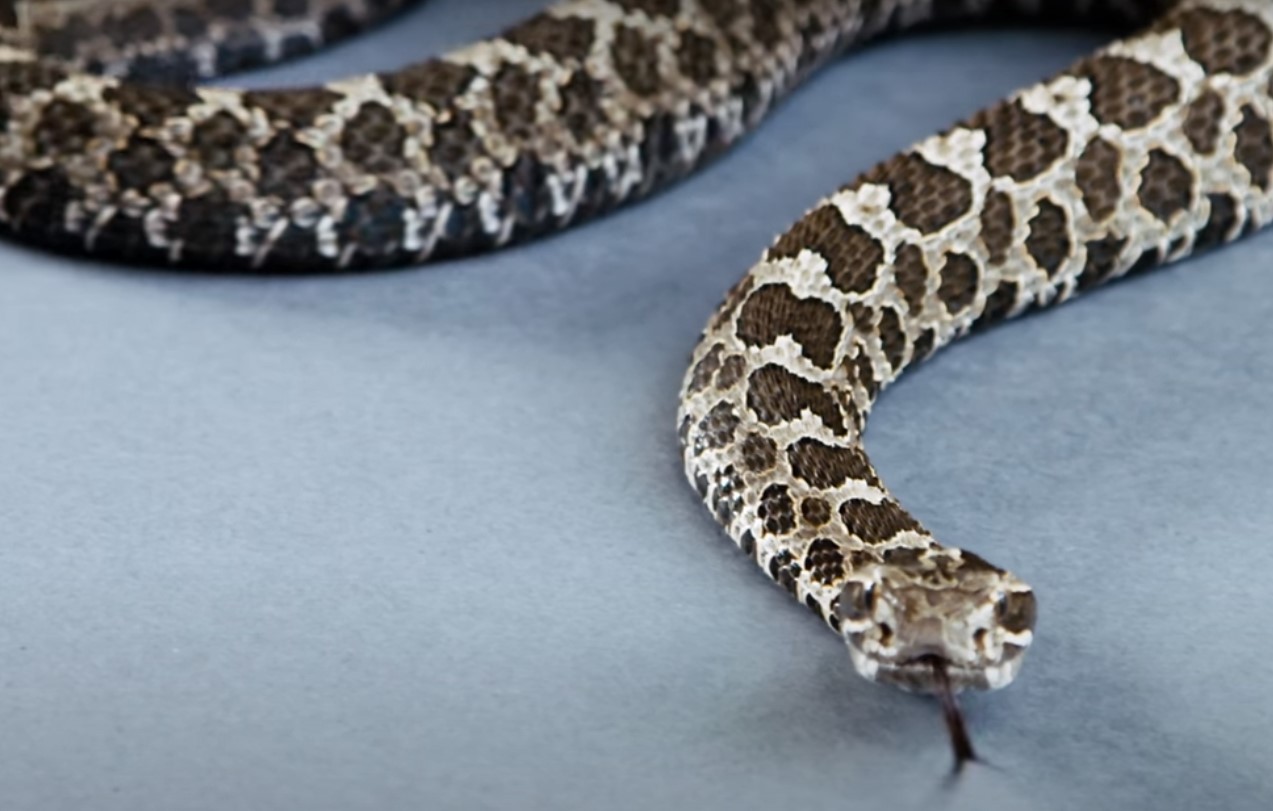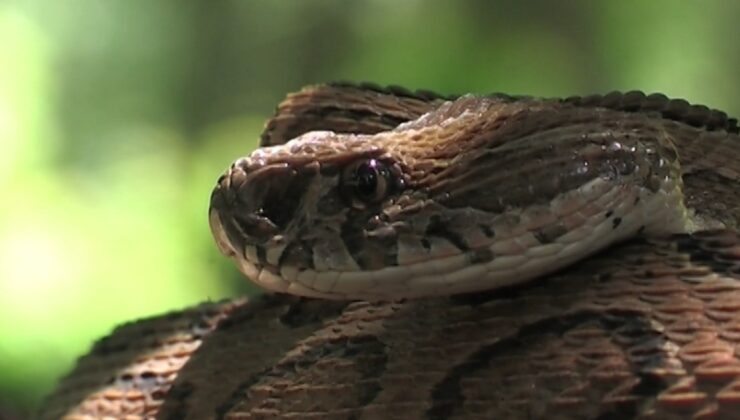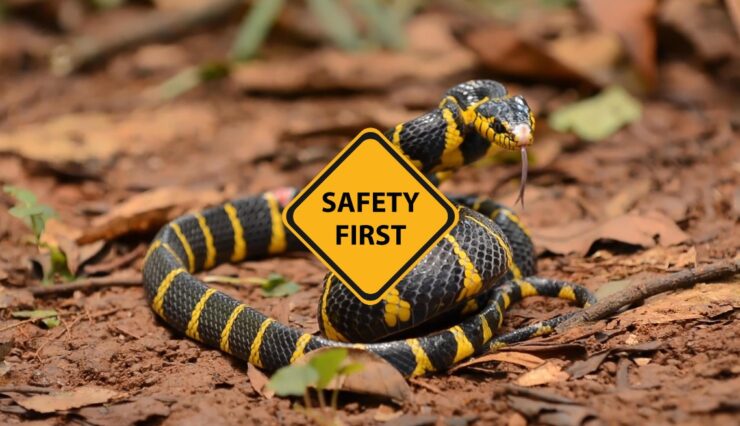When most people think of venomous snakes, they likely picture the deserts of the Southwest or the swamps of the Southeast. However, they can be found in unexpected places, including Minnesota. While Minnesota is not known for having a high population of venomous snakes, there are still a few species that can be found in the state. It’s important for residents and visitors to be aware of them and their characteristics in order to stay safe and avoid potential encounters.
In this article, we will explore the types of venomous snakes found in Minnesota, including their physical characteristics and habitats. We will also provide tips on how to avoid snake bites and what to do if you encounter a venomous snake. Whether you’re an avid hiker or simply curious about the wildlife in your area, this guide will provide valuable information on the venomous snakes of Minnesota.
The Timber Rattlesnake
The Timber Rattlesnake (Crotalus horridus) is one of the two venomous snakes found in Minnesota. It is typically a grey-brown or reddish-brown snake with dark bands running along the body and a distinct diamond pattern on its head. Its rattle, which can be heard from up to 25 feet away, gives it its name.
The Timber Rattlesnake is an important species in the Minnesota environment, so let’s learn more about it and its characteristics.
Physical characteristics
Understanding the physical characteristics is essential in identifying and avoiding them if you encounter them in the wild.
The Timber Rattlesnake has a triangular-shaped head, a thick and heavy body, and a rattle at the end of its tail that produces a distinctive sound when the snake feels threatened. The snake’s body coloration depends on the habitat it lives in, but it usually ranges from yellowish-brown to dark brown with dark-colored crossbands. The Eastern Massasauga, on the other hand, has a stout, grayish-brown body and a distinctive head pattern characterized by two dark stripes that run through its eyes.
Remember that both snakes are venomous and can cause harm to humans if provoked, so it’s essential to give them their space and let them continue on their way.
Habitat and distribution in Minnesota
Habitat: Timber rattlesnakes prefer deciduous forests, rocky outcroppings, and open prairies with ample sunlight. They can also be found near streams and wetlands.
Distribution: It has a documented range extending from southeastern Minnesota to the east-central portion of the state. However, they are considered rare and elusive, with only a few sightings reported every year.
If you come across a Timber Rattlesnake or any other venomous snake, it is best to give them space and let them be. These snakes play an essential role in maintaining the ecological balance of their habitats.
Behavior and diet
While the timber rattlesnake may seem like a dangerous predator, it actually plays an important role in its ecosystem by controlling populations of rodents and other small animals.
The timber rattlesnake is a carnivorous species, feeding primarily on small mammals such as mice, rats, and squirrels. They are also known to eat birds and amphibians. Their hunting strategy involves waiting in a coiled position until prey comes within striking distance, at which point they use their venomous bite to immobilize and kill the animal.
In addition to their hunting behavior, timber rattlesnakes also play a role in regulating the behavior of other animals in their ecosystem. Studies have shown that the presence of rattlesnakes can actually reduce the activity of rodents, which can help prevent damage to crops and other vegetation.
While the timber rattlesnake can be dangerous to humans if provoked or threatened, they generally prefer to avoid confrontation and will only attack if they feel threatened. It’s important for hikers and outdoor enthusiasts to be aware of the presence of timber rattlesnakes in their area and to take precautions such as wearing appropriate footwear and staying on designated trails. By understanding the behavior and diet of the timber rattlesnake, we can better appreciate the role this species plays in our ecosystem and take steps to ensure their conservation.
The Eastern Massasauga
The Eastern Massasauga is a species of venomous snake found in Minnesota. It is a small rattlesnake that can grow to a maximum length of two feet. It is recognized by its triangular head and dark brown, black, or grey coloration. It can be distinguished from other species by its blunt tail and small rattle.
It inhabits the open wetland areas of Minnesota and has a preference for dry soils.
Let’s take a closer look at Eastern Massasauga.
Physical characteristics
The Eastern Massasauga is native to Minnesota and is characterized by its distinctive physical features.
Here are some defining characteristics of Eastern Massasauga:
Size: Adults typically range from 2 to 3 feet in length, making them relatively small among these types of ophidians.
Color: Their skin color ranges from grayish-brown to reddish-brown, with a series of dark brown spots lined along their backs in a row.
Rattles: One of the most unique features is the rattle at the end of their tails. When threatened, the rattlesnake shakes its tail, creating a buzzing sound to ward off predators.
Scale pattern: They have keeled scales, which are rougher in texture, and a series of vertical lines on their faces known as loreal scales.
Habitat and distribution in Minnesota
This snake is typically found in wetland habitats, such as marshes, swamps, and bogs, where they can hunt for their prey and find shelter. They are also known to inhabit adjacent upland areas, including grasslands and forests.
In Minnesota, the Eastern Massasauga is found primarily in the southeastern part of the state, where there are suitable wetland habitats for the species. They are also found in some parts of the central and western regions of the state, although their populations are much smaller in these areas.
The distribution of the Eastern Massasauga in Minnesota is somewhat limited due to habitat loss and fragmentation. Wetland habitats, in particular, have been impacted by human activities such as drainage and development, which can make it difficult for the species to find suitable habitats and prey.
Conservation efforts are underway in Minnesota to protect and manage Eastern Massasauga populations. These efforts include habitat restoration and management, as well as public education and outreach to help people understand the importance of this species and how to avoid encounters with them. By preserving suitable habitats and taking steps to protect the Eastern Massasauga, we can ensure that this important species continues to thrive in Minnesota.
Behavior and diet
Despite its venomous nature, the Eastern Massasauga is a shy and elusive species that generally avoid confrontation with humans.
Like other species of snakes, the Eastern Massasauga is a carnivorous species that feeds primarily on small rodents such as mice and voles. They are also known to eat small birds and amphibians. Their hunting strategy involves waiting in a coiled position until prey comes within striking distance, at which point they use their venomous bite to immobilize and kill the animal.
While the Eastern Massasauga can be dangerous to humans if provoked or threatened, they generally prefer to avoid confrontation and will only attack if they feel threatened. It’s important for hikers and outdoor enthusiasts to be aware of the presence of Eastern Massasaugas in their area and to take precautions such as wearing appropriate footwear and staying on designated trails.
The Eastern Massasauga plays an important role in its ecosystem by controlling populations of rodents and other small animals. It also serves as prey for larger animals such as birds of prey and other snakes. By understanding the behavior and diet of the Eastern Massasauga, we can better appreciate the role this species plays in our ecosystem and take steps to ensure their conservation.
Venomous Snake Safety in Minnesota
While the chances of encountering them in the state are low, it’s important to be aware of their presence and take steps to ensure your safety when out in the wild.
In this section, we’ll discuss the important steps you should take to protect yourself should you encounter them.
What to do if you encounter a venomous snake in the wild
Encountering it while hiking or camping can be a scary experience, but there are steps you can take to stay safe.
If you encounter it in the wild, follow these safety tips:
- Remain calm and stay a safe distance away.
- Don’t provoke or try to handle it as that can cause it to bite.
- If it bites you or someone else, try to remember the snake’s color and shape to identify it later.
- Seek immediate medical attention if bitten by a venomous snake.
Keep an eye out for warning signs and stay alert while in their habitats.
Safety precautions when hiking or camping in snake habitat
When hiking or camping in these habitats, it is essential to take safety precautions to avoid their bites.
Here are some safety precautions you can take:
- Wear protective attire: Put on boots, long pants, and gaiters to reduce skin exposure to snakes.
- Stay on designated trails: Avoid bushwhacking and stick to well-traveled paths.
- Be alert: Watch your step and pay attention to your surroundings, especially when walking near rocks, logs, and other potential snake hiding spots.
- Bring a first aid kit: Be prepared for a bite emergency by carrying a first aid kit with antiseptic, bandages, and a snakebite extraction tool.
- Practice prevention: Minimize the risk of attracting snakes by not leaving food out, keeping your campsite clean, and avoiding potential snake nesting areas.
Following these safety precautions will help you stay safe while hiking or camping in snake habitats.
First aid for snake bites
Knowing first aid for these bites can mean the difference between life and death. If someone is bitten by a venomous snake, it’s crucial to act fast and take the following steps:
Call 911 or your local emergency services immediately if the victim shows symptoms of a severe allergic reaction, such as difficulty breathing or swelling of the face and throat.
Keep the affected limb immobilized and below heart level to slow the spread of venom.
Remove any tight clothing or jewelry around the bite area.
Clean the wound with soap and water or an antiseptic solution.
Do not try to suck the venom out with your mouth or use a tourniquet or ice pack, as these methods can worsen the effects of the venom.
Pro tip: Prevention is key when it comes to these bites. Wear protective clothing, and sturdy footwear, and use a walking stick when hiking in these areas.
FAQs
How can I prevent encounters with venomous snakes in Minnesota?
To prevent encounters with them in Minnesota, it’s important to stay on designated trails while hiking, wear appropriate footwear, and avoid reaching into areas where a snake may be hiding.
Are there any natural predators of venomous snakes in Minnesota?
Yes, some natural predators of venomous snakes in Minnesota include birds of prey and other snakes.
How do venomous snakes in Minnesota regulate their body temperature?
They regulate their body temperature by basking in the sun and seeking shade when necessary.
How can I tell if a snake is venomous by its color?
The color is not always an indicator of whether it is venomous or not. It’s important to look for other characteristics such as head shape and eye shape.
Is it legal to kill venomous snakes in Minnesota?
It is legal to kill a venomous snake in Minnesota if it poses an immediate threat to human safety, but it’s generally recommended to contact a wildlife removal professional instead.
Conclusion
In conclusion, Minnesota is home to two types of venomous snakes: the Timber Rattlesnake and the Eastern Massasauga. Both species are native to Minnesota and play an important role in the state’s ecosystem. While encountering a venomous snake can be frightening, it is important to remember that these snakes typically only attack when threatened or provoked. If you do encounter a Timber Rattlesnake or Eastern Massasauga, it is best to give them a wide berth and alert local authorities if necessary.
It is also important to remember the signs and symptoms of a venomous snake bite, including pain, swelling, and discoloration around the bite site, as well as nausea, vomiting, and difficulty breathing. If you or someone you know is bitten by a venomous snake, seek medical attention immediately.
Overall, understanding the presence and behavior of Minnesota’s venomous snakes can help residents and visitors alike avoid dangerous encounters and appreciate the unique wildlife that calls the state home.

